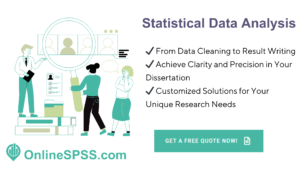The Dissertation Prospectus: What It Is and How to Write One Step-by-Step
Before diving into data collection or writing chapters, most graduate programmes—especially at the doctoral level—require students to submit a dissertation prospectus. Often misunderstood or overlooked, the prospectus is a vital planning document that lays the intellectual and logistical foundation for your research.
If you’re at the early stages of your dissertation and confused about what the prospectus is, how it’s different from a proposal, and how to write one, this guide is for you. In this post, you’ll learn exactly what a dissertation prospectus involves, why it matters, and how to develop a strong one that wins supervisor approval and sets your project on the right path.
What Is a Dissertation Prospectus?
A dissertation prospectus is a formal, written document that outlines the intended focus, scope, and research strategy for your dissertation. It is typically submitted after coursework is completed and before formal dissertation writing begins.
In simple terms, it’s a blueprint of your proposed research, explaining:
- What your dissertation will study
- Why the topic is significant
- What methods you will use
- What existing literature your work will engage with
- What you expect to find or contribute
Most institutions require the prospectus to be approved by a faculty committee before you can proceed with the dissertation research itself.
For example, if your topic is “The Effect of Remote Work on Employee Productivity in the UK Tech Sector,” your prospectus would briefly discuss why this topic matters, what theoretical models (e.g., motivation theory or organisational psychology) will guide your thinking, how you’ll gather data (e.g., online surveys or interviews), and what you expect your findings to contribute.
In short, the prospectus helps you transform an idea into a research-ready project, allowing your supervisor and committee to assess its clarity, relevance, and feasibility before giving you the green light.

Why Is the Prospectus Important?
The dissertation prospectus is important because it serves as the first critical checkpoint between you, your academic supervisors, and your institution. Rather than jumping headfirst into data collection or literature reviews, the prospectus forces you to pause, plan, and refine your thinking. This makes your project more focused, realistic, and academically valuable.
There are several key reasons why writing a strong prospectus is essential:
Clarifies your research direction: When you’re deep in coursework, your interests may be broad or scattered. The prospectus sharpens those interests into a viable, researchable focus.
Enables early feedback: Getting comments from your supervisor or advisory committee now—rather than after months of writing—prevents wasted time, methodological issues, or topic changes later on.
Ensures feasibility: Your institution needs to know that your project is manageable within the available time, resources, and ethical limitations. The prospectus helps identify any practical or theoretical challenges early.
Strengthens your funding or ethics applications: A well-written prospectus often serves as the foundation for grant proposals or institutional review board (IRB) applications.
Builds your confidence and credibility: By articulating your topic, rationale, and methodology clearly, you demonstrate that you are capable of independent academic research at an advanced level.
Ultimately, a strong prospectus is not just about meeting requirements—it’s about laying the intellectual groundwork for a dissertation that is coherent, focused, and impactful.
Is a Prospectus the Same as a Dissertation Proposal?
Not quite. While both documents serve as planning tools, the prospectus is usually shorter and more conceptual, focusing on what you plan to study and why. The dissertation proposal, on the other hand, often includes a detailed literature review and methodology section, written after more in-depth research.
In many institutions, the prospectus comes first, and once approved, it evolves into the more detailed proposal. However, terminology and expectations may vary by university or department, so always check your institution’s guidelines.

When Do You Write a Dissertation Prospectus?
Typically, the prospectus is written:
- After you complete your coursework
- Before or during the early stages of your literature review
- Before submitting any ethical clearance or formal research proposal
It is an important transition point between coursework and independent dissertation research, especially in PhD programmes.
What Should Be Included in a Dissertation Prospectus?
While formats may vary slightly across institutions, a strong dissertation prospectus typically includes the following key components. Each section plays an important role in building a persuasive and coherent case for your research.
1. Title of Your Dissertation
Your title should reflect the central focus of your research as clearly as possible. It doesn’t have to be final, but it should include the main concepts and variables you intend to study. Avoid vague or overly broad titles. Instead, aim for a concise, descriptive phrase that signals your topic, population, and approach.
Example: Exploring the Impact of Hybrid Work Models on Employee Well-being in UK Tech Startups
2. Introduction and Background
This section sets the stage for your dissertation by introducing the broader research context. Briefly describe the real-world issue or academic gap your study addresses. Provide just enough background for readers to understand why this topic matters, without diving too deep into the literature.
For instance, if you’re researching online learning in higher education, explain how recent global shifts (e.g., post-pandemic digital education trends) have created a need for further study.
3. Research Problem or Question
Clearly articulate the central research problem or guiding question your dissertation will address. This should be specific, focused, and researchable. A strong research problem demonstrates both academic relevance and real-world significance.
Avoid general questions like “How does technology affect learning?” and aim for something more refined, such as “What is the relationship between asynchronous learning tools and student engagement in undergraduate STEM courses?”
4. Aims and Objectives
This section translates your research question into achievable goals. Your aim is the overall purpose of the study, while the objectives are the steps you’ll take to fulfill that aim.
Think of your objectives as a roadmap for your study: what will you investigate, compare, measure, or explore? Usually, three to five clear objectives are sufficient for a well-scoped dissertation.
5. Literature Overview
This is not a full literature review, but a concise summary of key research that informs your study. Highlight major theories, findings, and debates in your field. Identify gaps or contradictions that your research seeks to address.
This section shows that you are not duplicating existing work and that you understand how your study fits within the broader academic conversation.
6. Theoretical Framework (if applicable)
If your study is guided by a specific theory or conceptual model, briefly explain it here. A theoretical framework provides a lens through which you interpret your findings. For example, if you’re using Self-Determination Theory to study motivation in athletes, explain why that framework is suitable and how it shapes your hypotheses or interview questions.
7. Proposed Methodology
Describe how you plan to conduct your research. Will you use a quantitative, qualitative, or mixed-methods approach?
Be specific about:
The design (e.g., survey, case study, experiment)
Your target population and sampling method
Data collection tools (e.g., interviews, SPSS-based surveys, document analysis)
How you will analyse the data (e.g., thematic analysis, regression, ANOVA)
This section must show that your plan is practical, ethical, and aligned with your research questions.
8. Significance of the Study
Explain what your research will contribute—either to theory, practice, policy, or future research. Will it address a social issue, fill a gap in the literature, or test a model in a new context?
Avoid generic claims and instead link your project’s significance directly to the research problem you outlined earlier.
9. Timeline or Work Plan
Include a realistic plan for completing each phase of the dissertation process. This could be a narrative timeline or a simple Gantt chart. Indicate key milestones like literature review, data collection, analysis, writing, and revisions.
Consider supervisor availability, ethics review timelines, and academic deadlines when building this plan.
10. Preliminary Reference List
Conclude your prospectus with a list of scholarly sources you’ve cited throughout the document. This should reflect the academic grounding of your topic and demonstrate your familiarity with the field.
Use the citation style required by your department (e.g., APA, Harvard, Chicago). Including recent, peer-reviewed literature strengthens your credibility.

Step-by-Step Guide to Writing a Dissertation Prospectus
Step 1: Choose a Manageable and Meaningful Topic
Start with a research area that interests you and has academic relevance. Use recent literature to identify gaps or unresolved debates.
Step 2: Write a Strong Problem Statement
Articulate the core problem or question your dissertation will address. It should be specific, researchable, and aligned with your field of study.
Step 3: Establish Research Objectives or Hypotheses
Clearly state what you aim to discover, test, or explore. Your objectives should be achievable within your dissertation timeline.
Step 4: Conduct Preliminary Literature Scanning
You don’t need a full literature review, but you should demonstrate that you are aware of key authors, concepts, and existing work on your topic.
Step 5: Choose an Appropriate Methodology
Decide whether your research is qualitative, quantitative, or mixed-methods. Justify why this approach suits your research question.
Step 6: Draft Your Prospectus Sections
Write each section clearly and concisely, following your department’s formatting rules. Use academic language, but avoid unnecessary jargon.
Step 7: Get Feedback from Your Supervisor
Once drafted, send the prospectus to your supervisor. Incorporate their feedback and be open to refining your scope or design.
Step 8: Submit for Approval
Submit your final version to the relevant committee or department for formal approval before progressing to your full dissertation proposal.
Common Mistakes to Avoid
- Choosing an overly broad topic that lacks focus or feasibility
- Skipping the literature context, which weakens justification
- Failing to justify your methods, making the study seem ungrounded
- Not aligning aims with methods, leading to incoherence
- Underestimating timeline or resources required
Avoiding these issues increases your chances of swift approval and sets your dissertation up for success.








